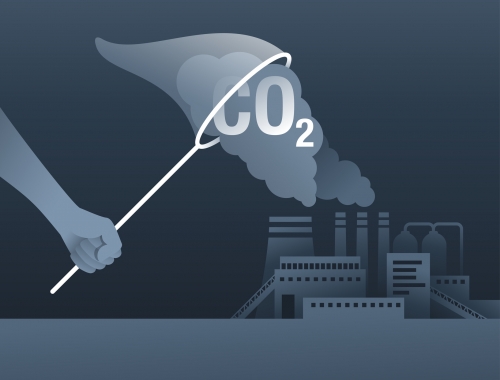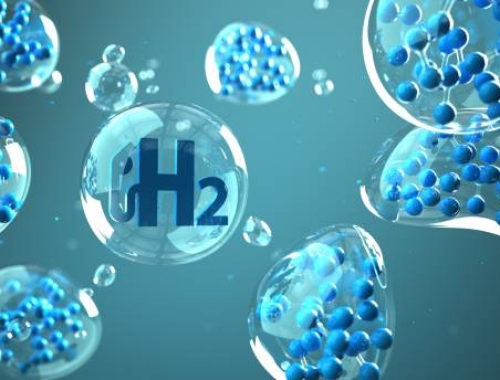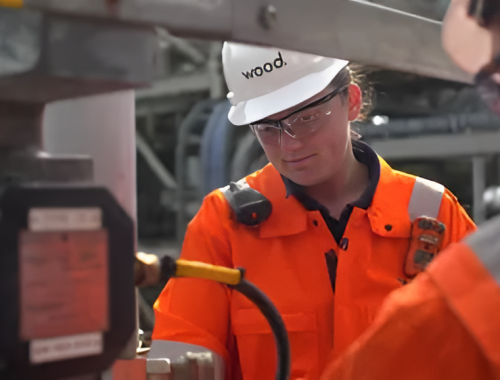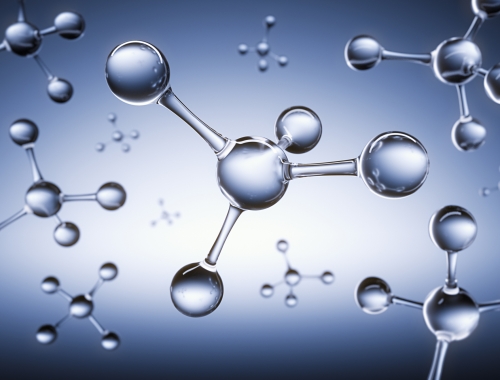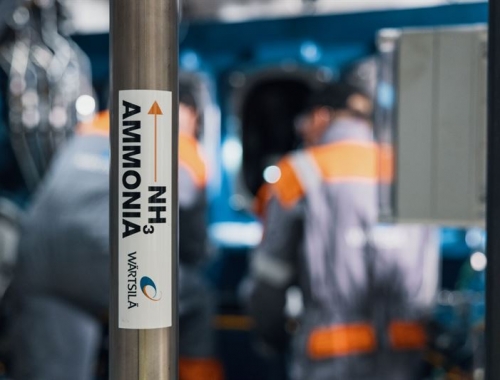Taking on methane emissions with technology and collaboration
SUMMARY
Improving technology and industry collaboration on best practices are helping to drive reductions in natural gas sector-related methane emissions, in addition to regulatory pressure.
By Tom YoungThe global natural gas industry continues to make advances in reducing its methane emissions, spurred on not only by regulatory requirements but also improving technology and collaboration on best practices.
Methane emissions associated with the global natural gas sector dropped 1.3% year/year to 36.7mn tonnes in 2022, according to the International Energy Agency (IEA), outstripping the 0.2% decrease in production that year. The IEA is pushing for even faster action, and says that around $100bn must be invested by 2030 to deploy all the necessary methane abatement measures in the sector.
Oil and gas methane emissions represent one of the best near-term opportunities for reducing global emissions because the actions required to cut them are well-established and cost-effective. The IEA estimates that around 70% of methane emissions from fossil fuel operations could be reduced with existing technologies, and almost all available abatement measures would be cost effective with a carbon tax of just $15/t of CO₂ equivalent (CO₂e).
The Global Methane Pledge, launched in November 2021 at the COP26 Climate Change Conference in Glasgow, marked an important step in bringing governments together on the issue. Under the pledge, countries representing 45% of global methane emissions collectively committed to reduce methane emissions from human activities by 30% by 2030.
Actions taken by oil and gas firms will be vital to achieving the goals of the pledge, according to Julien Perez, vice-president of strategy and policy at the Oil and Gas Climate Initiative (OGCI), a group of 12 leading majors and national oil companies looking to cut methane emissions.
“The OGCI’s Aiming for Zero Methane Initiative calls on all members of the industry to sign up to the principle of striving to reach near-zero methane emissions from operated oil and gas assets by 2030,” he says. “If the entire oil and gas industry makes similar commitments, roughly two thirds of the objectives pursued by the Global Methane Pledge could be achieved by 2030.”
To date, over 90 organisations have endorsed the Zero Methane Initiative, whose members will have to implement a wide arrange of means to avoid methane venting and flaring, as well as repairing any detected leaks,
Detection and monitoring
The first step in any methane reduction strategy is the monitoring and quantification of leaks, flaring and venting.
The OGCI has worked with the International Association of Oil and Gas Producers (IOGP) and the International Petroleum Industry Environmental Conservation Association (IPIE-CA) to create a series of best practice guides to demonstrate the most effective methane emissions detection and abatement technologies for the sector. The guides provide information on target setting and measurement, quantification and reporting, as well as technology deployment.
“While having the right attitude is important, nothing will be achieved without the right tools,” said Perez. “In this respect, action on methane is in a strong position – there is a wide variety of available, cost-effective technologies that companies can use to detect, quantify and abate-ment methane emissions.”
These technologies include monitoring with satellites, drones and sensors. In 2022, the OGCI commissioned a satellite monitoring campaign over Iraq which used a combination of satellite observations at country and asset level to identify major sources of methane emissions.
The scheme resulted in the detection and elimination of a continuous methane plume in Iraq releasing 5-10 of the gas every hour. The project, known as the Satellite Monitoring Campaign, has now been expanded to cover more countries, including Kazakhstan, Algeria, and Egypt.
A similar scheme called the Methane Alert and Response System (MARS), developed by the United Nations Environment Programme (UNEP), has just finished its pilot phase and will report its results at the upcoming COP28 climate conference.
MARS is a system that monitors and detects methane emissions and then notifies the relevant parties so they can take action. It is available to all companies of governments that wish to join. As well as informing firms of leaks, it also aims to build a fully transparent model of methane leaks around the world, and to make the data publicly available.
Satellite data is cross-referenced with ground-based measurements, company reporting, scientific studies and national inventories to build a better picture of methane emissions, according to Manfredi Caltagirone, head of the International Methane Emissions Observa-tory (IMEO), the division of UNEP which runs MARS.
“We have learned a lot in the pilot and refined our processes, operationalising a system that, until now, has only been used for scientific purposes,” he said.
The scheme is currently working with companies and governments that are part of the Oil and Gas Methane Partnership (OGMP) 2.0, which include many of the OGCI members as well as a host of smaller companies.
Although using satellite data to detect leaks has been done before, the breadth and rigour of the MARS processes enables better data and better understanding of emissions.
“Some big companies were already using satellite data, but they don't do it with the transparency that would be required to track whether any result has actually been achieved,” said Caltagirone. “Because our data will be public there will be a broader understanding of the size and the frequency of these leakage events.”
In the next phase of the scheme MARS will use new types of satellites — principally MethaneSat, a methane tracking satellite jointly funded and operated by US non-governmental organisation the Environmental Defense Fund (EDF) and the New Zealand Space Agency — to build models of regional totals of methane emissions. MethaneSat is scheduled to launch next year.
“We plan on increasing quite significantly our ability to engage with government and com-panies in the next phase of the programme,” said Caltagirone.
Sharing knowledge
Not all oil and gas companies have the budget to enact methane reduction programmes in the same way as firms participating in projects such as the OGCI or MARS. But, thanks to new regulations in Europe and the US, smaller firms in these regions will still be forced to address the issue eventually.
A new ‘methane fee’ put in place in the US will apply to any facility’s emissions exceeding 25,000 t of CO₂e. Methane emissions will be penalised at $900/t in 2024, increasing to $1,200 in 2025, and $1,500 in 2026. In the EU, the European Parliament has adopted a position on a law requiring operators to carry out regular methane leak detection and repair programmes. The final regulation has yet to be agreed with the EU Council, but is expected to be on the statute books by next year.
Although many larger firms already have methane reduction plans in place, smaller firms are still on a learning curve, according to Robert Kester, Chief Technology Officer for Emissions Management at technology firm Honeywell.
“It's going to be a few years before the industry is fully on board. Everybody's piloting and figuring out their strategies and approaches, and then they'll also want to make sure what they do will also satisfy all these new regulations,” he said.
The layered approach taken by larger firms — where continuous monitoring at the operations level is supported by spot checks from satellites, aerial flyovers or drones — is too expensive for many smaller firms to pilot. But they will still benefit from the work carried out so far and shared via industry forums, and can wait till costs fall before selecting the best solutions for their needs.
“Smaller companies would much rather have the big companies pilot everything, figure it out, and then adopt what works,” said Kester.
Honeywell set up a new group a year ago that offers an end-to-end solution for firms looking to manage their emissions.
The solution uses data from sensors and cloud imaging cameras combined with data from combustion sources, flare monitoring devices, satellite, drones and planes to create a single platform for monitoring.
“Our software platform…pulls in all of that data, and then looks at trends and helps our customers not only find and fix leaks, but actually identify what's causing them so that they can start changing their process to reduce emissions,” said Kester.
As well as leak detection and elimination, the system can be used for the quantification of methane emissions.
Action toolbox
Cutting methane emissions requires action in a number of areas beyond leak monitoring and repair, according to the Environmental Partnership, an association of 102 US oil and gas companies committed to taking action on the issue. The most important of these are flare management and the retrofitting or replacement of both pneumatic controllers and compressors.
Members of the partnership have reduced flaring by finding routes to market for associated gas, and by using new technologies to improve reliability and efficiency when flaring is necessary.
In 2022, participating companies achieved a 14% reduction in total flare volumes and a 2.4% reduction in flare intensity in the previous year, even as US natural gas production grew by 4% during the same time period.
The same companies also installed a total of 4,000 zero-emission pneumatic controllers at new sites and retro-fitted almost 4,800 compressors.
The partnership hosts workshops and meetings across the US, allowing firms to share valuable information about new strategies and technologies.


